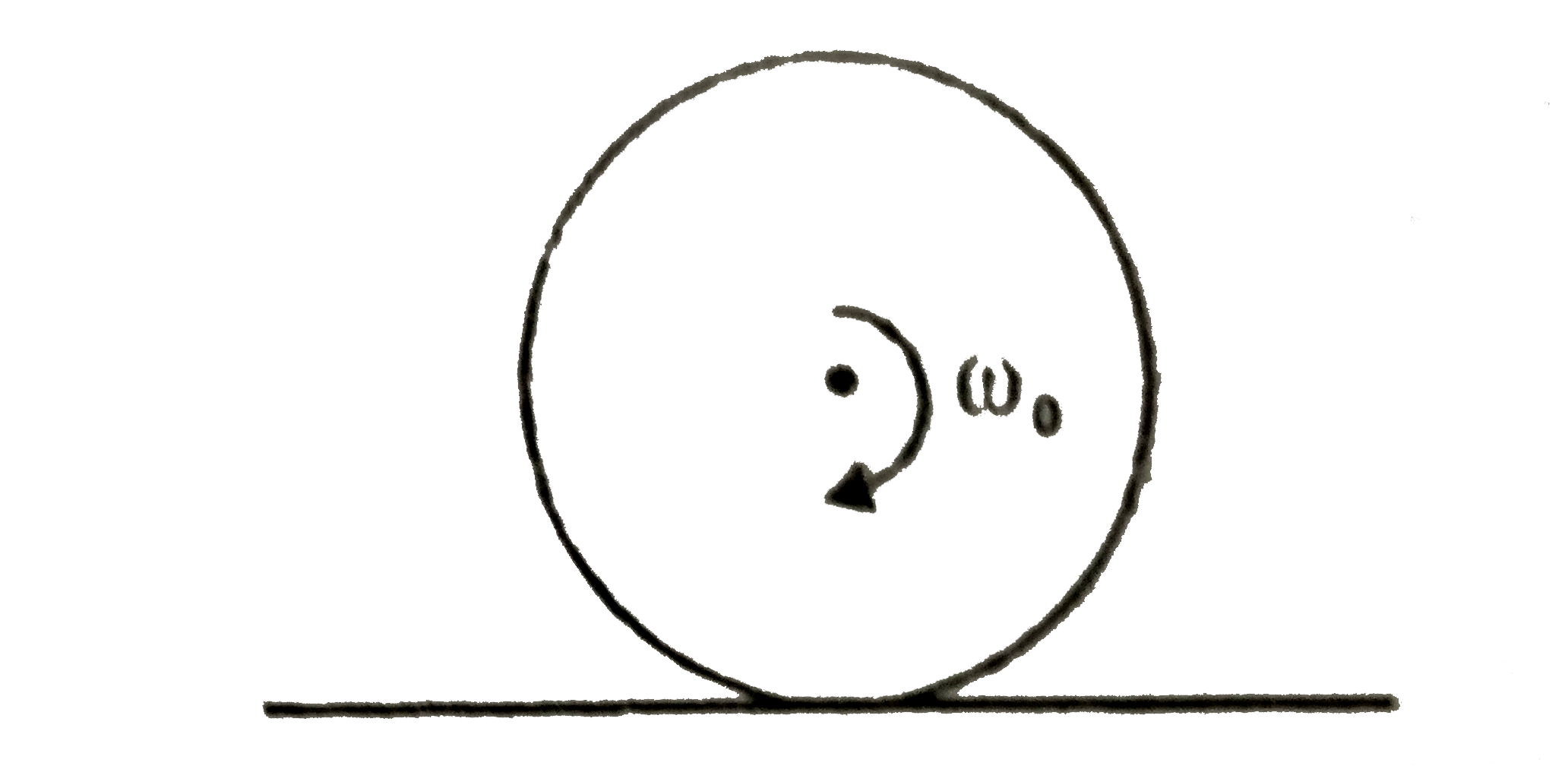A body of mass m and radius r is rotated with angular velocity ω as shown in the figure & kept on a surface that has sufficient friction then the body will move

backwards first and then move forward
forward first and then move backward
will always move forward
none of these
The correct Answer is:C
Friction force on sphere is in the forward direction, sphere will always move in forward direction.
Topper's Solved these Questions
Similar Questions
A ring of mass m and radius R is being rotated about its axis with angular velocity ω. If a increases then tension in ring
View SolutionA disc of mass M and radius r is rotating with an angular velocity ω. If gently, two masses m each are placed at a distance r/2 on either side of the axis of rotation, what will be the new angular velocity ?
View Solution
Knowledge Check
If a body of mass 'm' and radius of gyration K rotates with angular velocity ω, then the angular momentum of the body will be
Am2kωBmk2ωCmkω2DmkωA ring of radius R is first rotated with an angular velocity ω and then carefully placed on a rough horizontal surface. The coefficient of friction between the surface and the ring is μ. Time after which its angular speed is reduced to half is
Aω0μR2gBω0g2μRC2ω0RμgDω0R2μgA ring of radius 'r' and mass per unit length 'm' rotates with an angular velocity 'ω' in free space then :
ATension in ring is zeroBTension will vary at all pointsCTension is constant throughout ringDTension in string is mω2r2
A ring of mass m and radius R is being rotated about its axis with constant angular velocity ω in the gravity free space. Find tension in the ring.
View SolutionA disc of mass m and radius R rotating with angular speed ω0 is placed on a rough surface (co-officient of friction =μ). Then

View SolutionA body of mass m and radius of gyration K has an angular momentum L. Then its angular velocity is
View SolutionA circular disc of mass M and radius R is rotating with angular velocity ω . If two small spheres each of mass m are gently attached to two diametrically opposite points on the edge of the disc, then the new angular velocity of the disc will be
View SolutionA disc of mass m and radius r is gently placed on another disc of mass 2m and radius r. The disc of mass 2m is rotating with angular velocity ω0 initially.
The disc is placed such that axis of both are concident. The coefficient of friction is μ for surfaces of contact Assume that pressure on disc is uniformely distributed.

Angular velocity 'ω' when both discs start rotating together without slipping
View Solution
